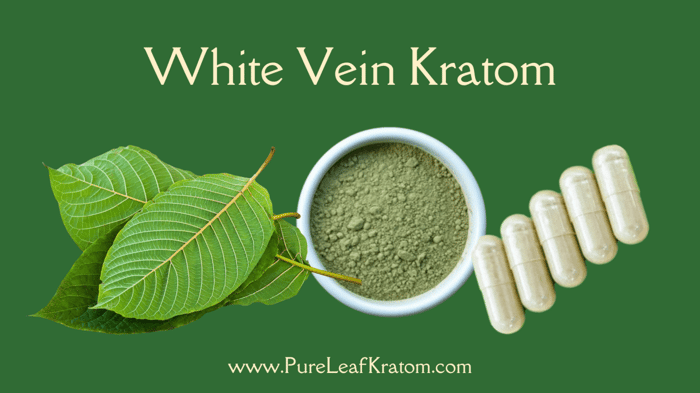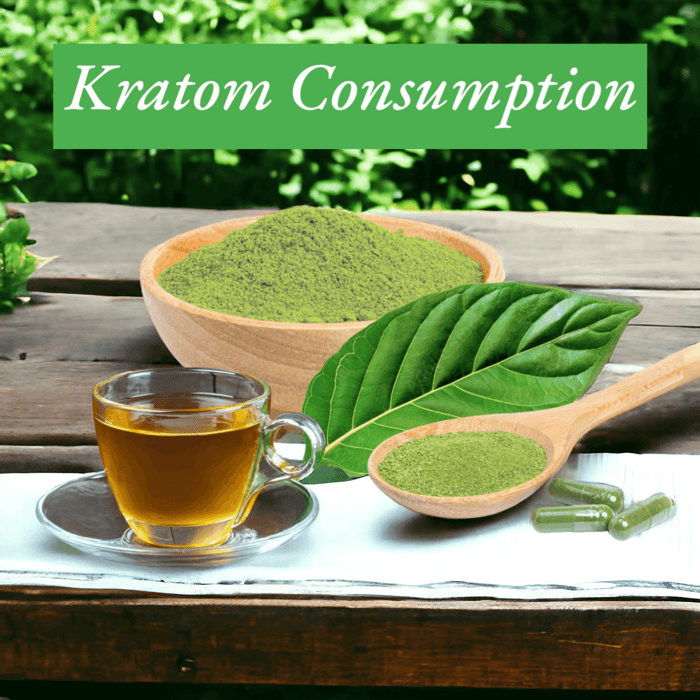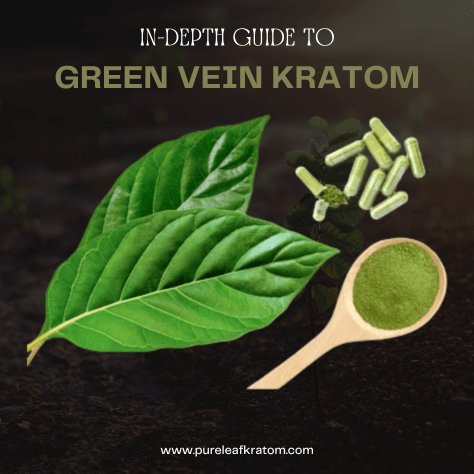
Unraveling Red Vein Kratom: Assessing its Effectiveness for Chronic Pain Relief
Delving into the Depths of Kratom, with a Focus on Red Vein Kratom
Nowadays, increasing numbers of people suffering from chronic pain are shifting their focus towards plant-based solutions, and among them, a particular alternative medicine has been on the rise: Red Vein Kratom. Named scientifically as Mitragyna speciosa, this tropical evergreen tree originates from Southeast Asia and hosts a range of alkaloids believed to possess therapeutic properties.
Pure Leaf Kratom Capsules Red Kali
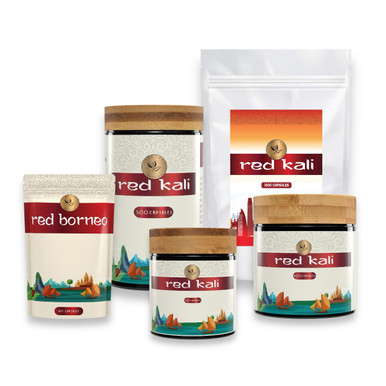
$6.95
Pure Leaf Kratom Red Kali Capsules Pure Leaf Kratom Red Kali Capsules have a mild but long-lasting soothing effect, perfect for relief and relaxation. While...… read more
A Glimpse at Red Vein Kratom
Among the various strains of Kratom, a standout due to its unique benefits and morphological traits is the Red Vein Kratom. From the thick tropical forests, It has spread its roots to a far-reaching audience, with users lauding its purported effectiveness for chronic pain relief. This strain is easily recognizable by the distinct red veins coursing through its dark green leaves, lending it an iconically rich appearance.
Contrasting Red Vein Kratom with Other Kratom Strains
While Red Vein is gaining considerable attention, other strains of Kratom, notably Green and White Vein, also come with their unique properties. Each strain exhibits effects varying in intensity and duration, yet Red Vein Kratom holds an edge in the domain of analgesia and relaxation.
A Brief Reflection on Red Vein Kratom Traditional Use
In many parts of Southeast Asia, the leaves of Red Vein have been employed for centuries as an alternative medicine to alleviate various ailments. With a favorable safety profile linked to traditional use, Red Kratom has been employed for pain management, easing muscle tension, and even treating opiate withdrawal.
Contemporary Forms of Red Vein Kratom Administration
In recent times, the use of Red Vein has deviated from its traditional roots, allowing it to be consumed in various forms – from being brewed as tea to encapsulation for ease of use. This enhanced accessibility has further propelled its popularity among those seeking chronic pain solutions.
Looking into the Therapeutic Journey of Red Vein Kratom
As the tides of medicine shift towards integration, alternative solutions like Kratom are advancing from the periphery to the more accepted mainstream treatments. The global uprise of plant-based alternative medicines witnesses Red Vein as a key player, especially for effective pain relief.
Tracing the Sprouting Acceptance in Traditional and Integrative Medicine
What once was an endemic plant of Southeast Asia, with limited recognition, Red Vein Kratom today finds itself discussed in the halls of integrative and traditional medicine. Its rise can be traced back to the formidable analgesic properties harbored within its alkaloids.
Red Vein Kratom Compared to Other Plant-Based Pain Relievers
When measured up against the competition of plant-based pain relievers, Red Kratom positions itself as a formidable contender. Its potential for pain relief, coupled with the added benefit of inducing relaxation and aiding sleep, makes it a preferred choice over other conventional remedies.
Mit 45 Raw Red Leaf Kratom Powder
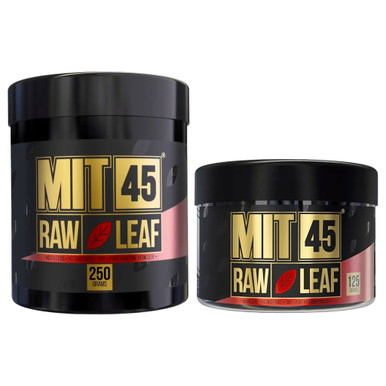
$14.79
Mit 45 Raw Red Leaf Kratom Powder It doesn’t get any better than Mit 45 Raw Red Leaf Kratom Powder. erived from the picturesque, verdant...… read more
Expanded Scope of Chronic Pain and Alternative Solutions
Chronic pain is an affliction that torments millions globally, relentlessly threatening both physical and psychological wellbeing. This continuous discomfort tags along a host of associated problems including sleep disturbances, impaired mobility, increased anxiety, and depression manifesting a significant adverse impact on one's overall health. Further compounding this problem are the drawbacks of the existing therapeutic options for chronic pain.
Challenges of Chronic Pain
Conventional remedies like opioids and non-steroidal anti-inflammatory drugs often fall short in providing long-lasting relief from chronic pain. Worse still, their use tends to come with a slew of issues including dependence, addiction, and severe side effects that further impair a patient's quality of life.
The high cost of chronic pain management also compounds the distress. This includes the financial burden of repeated medical visits, expensive prescriptions, possibly surgical interventions, and lower earning capacity. Furthermore, the social costs present in strained relationships, decreased social participation, and the impact on mental health, are also devastating.
Emerging Alternative Remedies: Focus on Kratom
Given these challenges, the quest for alternative remedies for chronic pain is understandable. Recently, there has been an uptick in attention towards plant-based alternatives, and among these, Kratom has emerged as a promising option.
Many chronic pain sufferers have embraced Kratom as a preferable remedy. According to a survey of over 5,000 Kratom users, 73% primarily used the plant-based alternative to self-treat chronic pain, without clinical supervision. Kratom delivers analgesic effects through alkaloids like mitragynine and 7-hydroxymitragynine, known to target opioid receptors, thus offering pain relief on consumption.
Furthermore, apart from alleviating chronic discomfort, individuals have reported additional benefits such as improved mood and better sleep quality even though more exhaustive research is needed to fully understand these effects.
Though promising, it is necessary to understand that Kratom might induce adverse gastrointestinal effects at high doses (>5g per dose) and frequent usage (>22 doses per week). Therefore, it becomes pivotal to advocate responsible usage and understand the potential risks, including addiction and product contamination, associated with the unregulated market for Kratom.
In summary, the upswing in Kratom usage, particularly the Red Vein Kratom, can be attributed to the escalating global chronic pain crisis. This underscores the urgent need for in-depth exploration into plant-based alternatives and their potential to offer effective, holistic pain relief without manifesting severe side effects.
Comprehensive Analysis of Alkaloids in Red Vein Kratom
Alkaloids play a defining role in the therapeutic potential and efficacy of Red Vein Kratom. Therefore, understanding these alkaloids' roles and composition in Red Vein Kratom will deliver crucial insights into its potential as an option for chronic pain relief.
Understanding the Role of Alkaloids
At the heart of the matter are alkaloids, specifically mitragynine and 7-hydroxymitragynine, key active ingredients in Red Vein Kratom. Alkaloids affect the body's opioid receptors, binding to numerous such receptors, including mu, delta, and kappa receptors. The highest affinity forms with the mu receptors, resulting in an analgesic or pain-relieving effect largely due to this interaction.
Among the two dominant alkaloids in question, it is worth noting that 7-hydroxymitragynine is a much more potent mu opioid receptor agonist and analgesic compound compared to mitragynine. Consequently, even though mitragynine is more abundant, the higher potency level of 7-hydroxymitragynine gets attributed with superior analgesic qualities. Nevertheless, mitragynine considered as a partial agonist indeed contributes to these properties.
Red Vein Kratom's compatibility doesn't stop at opioid receptors. Certain other alkaloids such as speciociliatine, paynantheine, and speciogynine also interact not only with opioid receptors but non-opioid receptors like alpha-adrenergic and serotonin receptors. This assortment of interactions can result in a range of effects, including not only analgesia but psychoactive effects as well.source
Overview of Red Vein Kratom’s Alkaloid Composition
A widely held belief posits Red Vein Kratom as boasting higher levels of opioid-like compounds in its alkaloid content, which some suggest could be behind its increased pain-relieving potency compared to other strains. The challenge lies in proving this theory, considering the complex chemical dogma and numerous interacting variables that define the chemical composition of Kratom leaves.
The process wherein the powerful alkaloids of Red Vein Kratom are formed involves the condensation of tryptamine and secologanin, catalyzed by the enzyme strictosidine synthase. This process creates multiple chiral centers that complicate the chemical synthesis of these alkaloids.source
Apart from this, there's a variable mix of geographic factors and vein color changes that substantially affect the chemical composition of the Kratom plant. Such fluctuations make understanding the precise alkaloid composition a complex task, given the numerous influences and their multilayered interactions in every given strain.
Nevertheless, despite these complexities and variables, an increased level of the main alkaloids, particularly mitragynine and 7-hydroxymitragynine, has been observed in Red Vein Kratom. The correlation of these higher alkaloid levels with increased analgesic potency forms an intriguing area of investigation fostering ongoing research and discourse.
Raw Kratom Capsules Red Borneo

$9.95
Raw Kratom Capsules Red Borneo Raw Kratom Capsules Red Borneo stand as the epitome of potency within the Borneo Kratom family. This exceptional strain is...… read more
In-depth Examination of User Reports and Discrepancies in Findings
Kratom users often report different experiences based on the strain, with Red Vein Kratom carrying a reputation for being especially efficacious for pain relief and relaxation. However, the gap between anecdotal reports and scientific findings raises questions about the role of specific alkaloids, the placebo effect, and marketing tactics in shaping our understanding of different strains' effectiveness.
Examination of User Surveys
Comprehensive analysis of user testimonials reveal intriguing patterns regarding the use of Red Vein Kratom. According to a study involving 644 current kratom users, there were distinct experiences reported for different kratom strains. Red strains were often described as more sedating, aligning with the commonly held belief, and users attested to its effects on their sleep patterns, mood regulation, and overall physical wellness. Some users reported that the usage of Red Vein Kratom didn’t just aid in pain management, but also enhanced relaxed states leading to better sleep and mood enhancement.
Investigating Discrepancies between User Experiences and Scientific Findings
Interestingly, despite these personal accounts, subsequent chemical analysis of the kratom products revealed no significant differences in alkaloid content between the strains sold by the vendors that most respondents purchased from. This inconsistency between user-reported efficacy and the results of controlled trials instigate curiosity.
In an era heavily under the influence of marketing strategies and the power of persuasion, we cannot ignore the possibility of a placebo effect. When users come across marketing claims stressing, for example, the exceptional relaxing properties of Red Vein Kratom, their expectations could shape their experiences. If you anticipate that Red Vein Kratom will help you rest better, your brain might well enforce this placebo effect, resulting in improved sleep, regardless of the negligible differences in alkaloid content.
The role of complex marketing tactics employed by various vendors also deserves due examination. The narrative, crafted attractive marketing descriptions, could be driving the unique experiences reported by users. A strong argument can be made that the perceived differences may reflect a placebo effect driven by marketing claims rather than pharmacological differentiation.
Another hypothesis warrants attention: that perhaps the reported differences stem from other minor compounds or interindividual metabolic variation, even if the main alkaloid levels don't differ significantly. Future controlled trials are indeed imperative to further investigate these complexities and address these discrepancies.
While current studies do suggest that alkaloid content and profiles might vary significantly between strains, producing markedly different psychoactive effects, more research is critically required. Until then, these findings concerning the effectiveness of Red Vein Kratom can only confirm anecdotal beliefs that kratom strains do have distinct psychoactive properties that shape unique user experiences, rather than prove any assertions categorically.
While the potential effectiveness of Red Vein Kratom for chronic pain relief can't be overlooked, it's imperative to also examine the potential risks linked to its consumption. Alongside these, grasping the legal implications tied to the use of Kratom makes for an informed and balanced perspective.
Potential Risks
Physical and Psychological Dependency
The most glaring concern is the risk of addiction linked with long-term and high-dose Kratom use. Highlighting a couple of case studies, certain users developed physical and psychological dependency after habitual use. Symptoms of this dependency parallel those seen in opioid addiction, raising serious concerns about its regular use.
Withdrawal Symptoms and Overdose
Kratom withdrawal symptoms - restlessness, insomnia, mood swings, and flu-like symptoms - have been anecdotally reported. Additionally, overdoses from excessive consumption have been documented, underscoring the necessity for appropriate dosage and supervised intake.
Safety Profile: Short-Term and Long-Term Side Effects
In the short-term, side-effects may include dry mouth, loss of appetite, and constipation. Long-term use may cause weight loss, liver damage, and other significant negative impacts on health. The safety profile of Kratom thus needs mindful and prudent consideration amidst its touted benefits.
Legal Implications and FDA Status of Kratom
FDA's View of Kratom
The U.S. Food and Drug Administration (FDA) remains wary of Kratom, chiefly because of the opioid-like properties of mitragynine and 7-hydroxymitragynine. The agency has issued warnings against its use due to a reported link with several deaths, and the potential for dependency and addiction.
Controversy over Scheduling
Despite arguments about Kratom's medicinal potential, the Drug Enforcement Administration (DEA) considered designating it as a Schedule I drug in 2016. However, due to widespread outcry, they withdrew this proposal. Its inclusion in this category signifies an absence of currently accepted medical use along with a high potential for abuse.
Current Legal Status: Country-Wise Breakdown
The legality of Kratom varies widely across the globe, with some countries entirely banning it, while others adopt a more permissive stance. For instance, it's legal in the United States (except in a few states), while it's illegal in several countries, including Australia and Malaysia. A global Kratom legality breakdown can be found in the relevant map.
In summary, while the potential of Red Vein Kratom in pain relief is promising, its risks and legal framework require further exploration. More research is needed to ascertain the true benefits and risks this plant...context.


